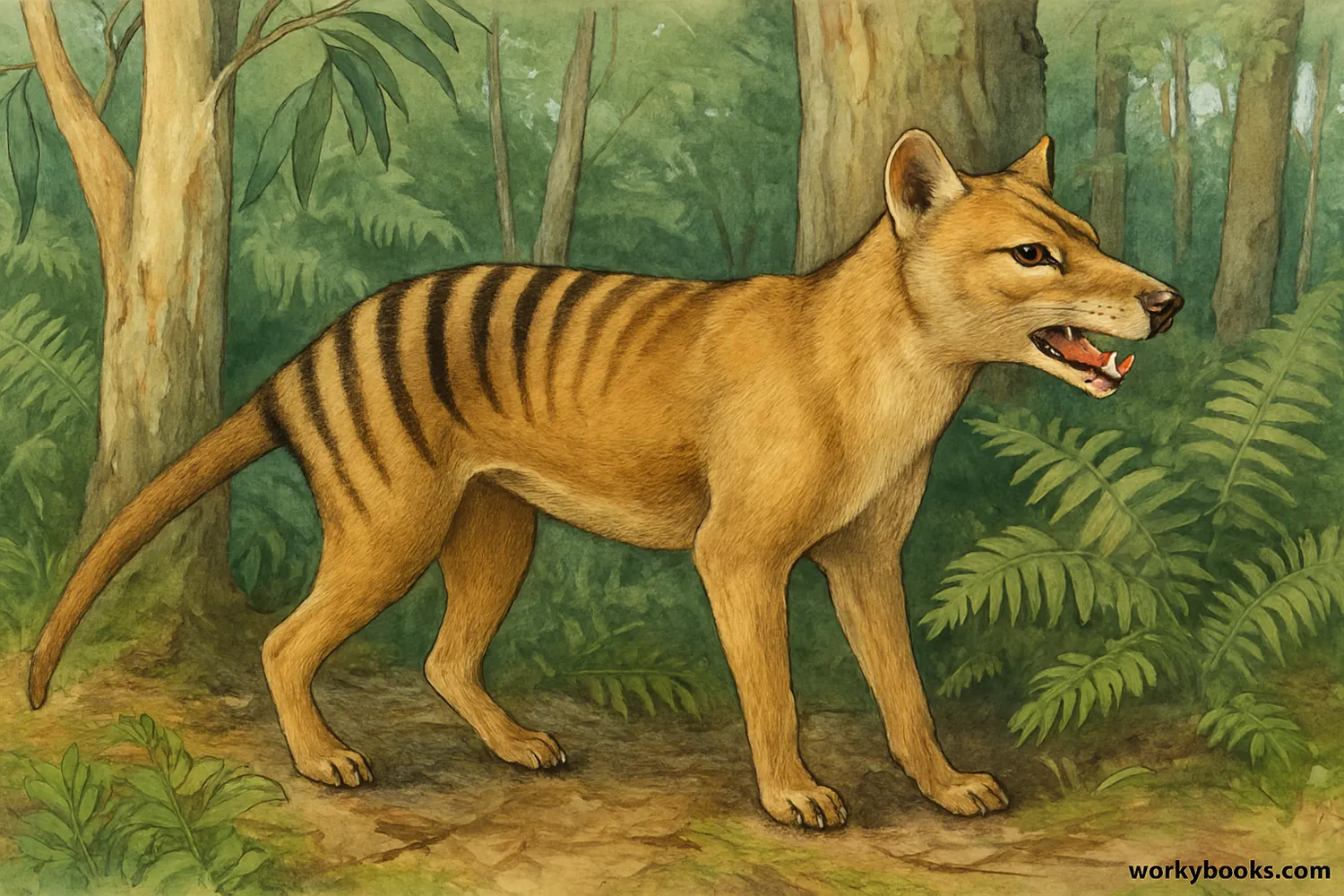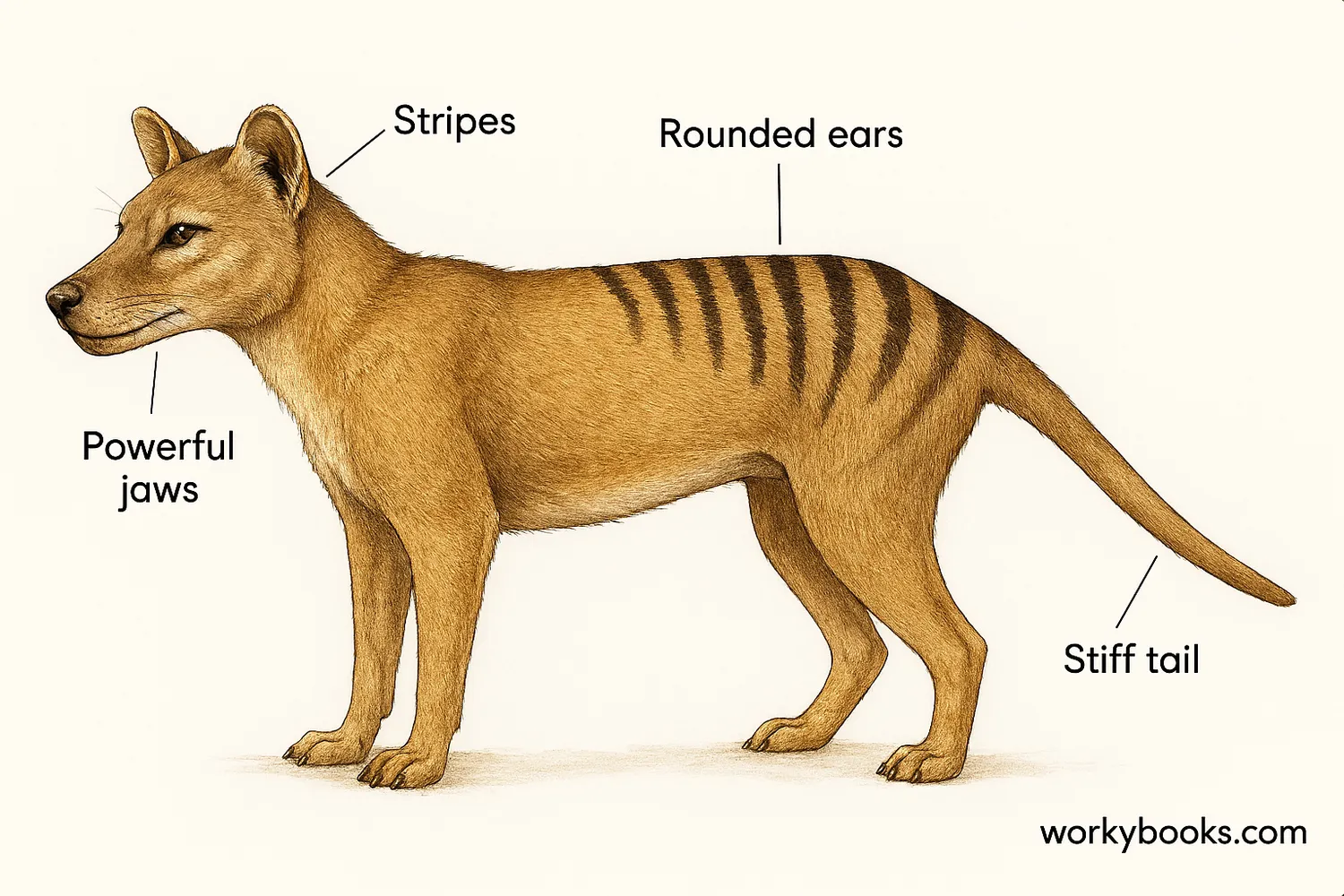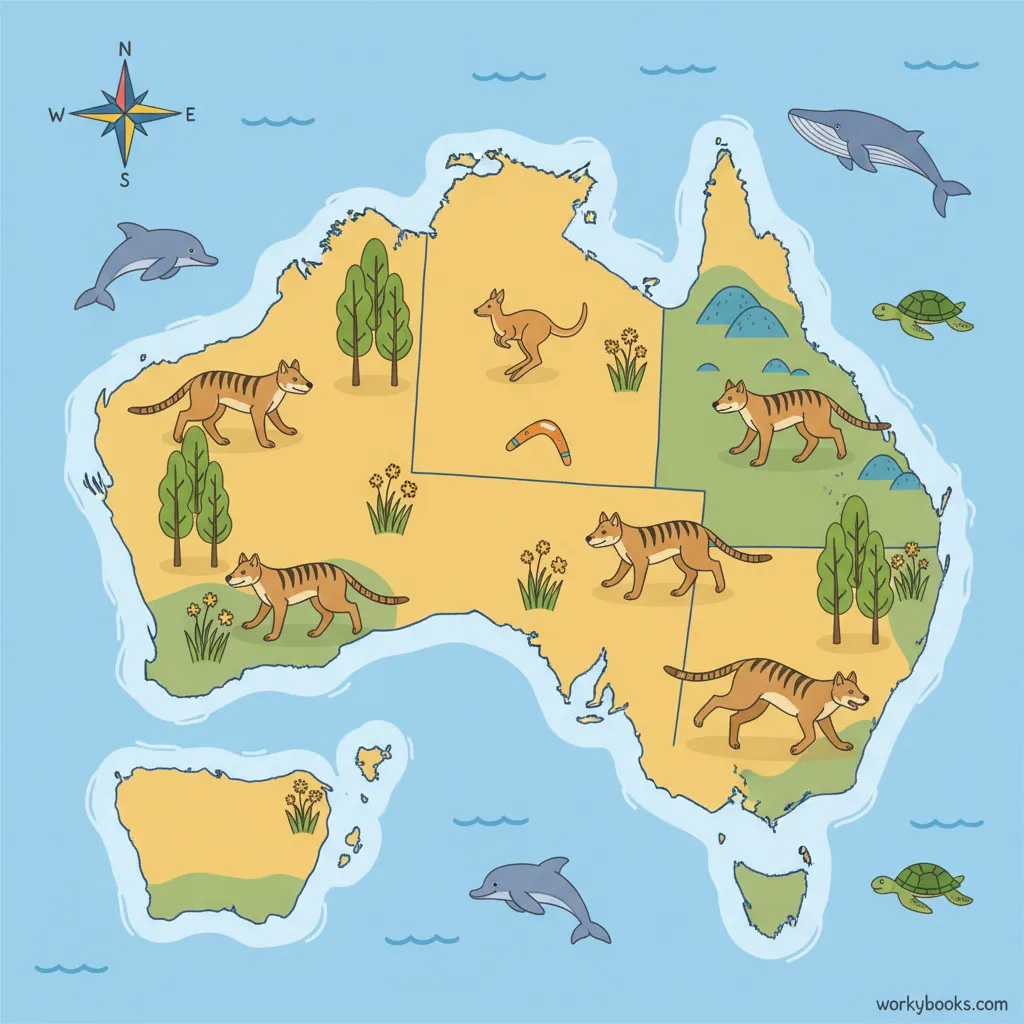Tasmanian Tiger - Definition, Facts, Examples, Quiz, Trivia
Understanding the Thylacine: Australia's Mysterious Marsupial
What is a Tasmanian Tiger?

The Tasmanian Tiger, also known as the thylacine, was a special kind of animal called a marsupial. Even though it had "tiger" in its name, it wasn't related to tigers at all! It got this name because of the dark stripes on its back.
Thylacines were about the size of a medium to large dog, with stiff tails and dog-like heads. They were carnivores, which means they ate other animals. The most special thing about them was that, like kangaroos and koalas, they carried their babies in a pouch!
Science Fact!
The scientific name for the Tasmanian Tiger is Thylacinus cynocephalus, which means "dog-headed pouched one."
Tasmanian Tiger Appearance

The Tasmanian Tiger had a very unique appearance that made it different from other animals:
Stripes
13-21 dark stripes across its lower back and tail
Size
About 100-130 cm long (39-51 inches) plus a 50-65 cm tail
Color
Sandy yellowish-brown to gray fur with lighter underside
Head
Dog-like shape with rounded ears and powerful jaws
Pouch
Females had a backward-opening pouch to carry babies
Their jaws could open unusually wide—almost 90 degrees! This helped them eat larger prey. Despite their name, they were much smaller than actual tigers, weighing only about 20-30 kg (44-66 pounds).
Habitat & Behavior

Long ago, Tasmanian Tigers lived across mainland Australia and New Guinea. But by about 2,000 years ago, they only survived in Tasmania—the island south of Australia.
In Tasmania, they lived in forests, grasslands, and wetlands. They were mostly nocturnal, which means they were active at night and slept during the day. Thylacines were shy animals that avoided humans when possible.
Nocturnal Hunters
Active at night, hunting small animals and birds
Homes
Lived in caves, hollow logs, and dense vegetation
Diet
Ate small animals like wallabies, possums, and birds
Tasmanian Tigers didn't hunt in packs like wolves. They usually hunted alone or in small family groups. Despite common stories, there's no evidence they attacked sheep or other large animals often—they preferred smaller prey.
Extinction of the Tasmanian Tiger

The Tasmanian Tiger became extinct, which means there are none left alive today. This happened for several reasons:
Hunting
People wrongly believed they attacked sheep, so they were hunted
Habitat Loss
Forests were cleared for farms and towns
Disease
Some scientists think a disease might have affected them
Bounties
The government paid money for each thylacine killed
The last known Tasmanian Tiger died in a zoo in Hobart, Tasmania, on September 7, 1936. This day is now remembered as National Threatened Species Day in Australia.
Sadly, people didn't realize how close they were to extinction until it was too late. The last thylacine was named Benjamin, though we're not sure if it was actually male or female.
Did You Know?
In 1888, the Tasmanian government paid £1 (about $100 today) for every adult thylacine killed and 10 shillings for every young one. Over 2,000 bounties were paid.
Tasmanian Tiger Sightings

Even though the last confirmed Tasmanian Tiger died in 1936, some people believe they might still exist in remote parts of Tasmania. There have been many reported sightings over the years.
Scientists have searched for evidence using camera traps and other tools, but so far, no definite proof has been found. Most scientists believe the thylacine is truly extinct, but the possibility of survival captures people's imagination.
Search Efforts
Scientists have organized searches in remote areas
Camera Traps
Automatic cameras are set up to capture wildlife photos
DNA Research
Scientists are studying thylacine DNA from museum specimens
Some scientists are even working on de-extinction projects—trying to bring back the Tasmanian Tiger using advanced genetic technology. This is very challenging and controversial, but it shows how fascinated people remain with this unique animal.
Tasmanian Tiger Quiz
Test your knowledge with this quiz! Answer all 5 questions to see how much you've learned about the Tasmanian Tiger.
Frequently Asked Questions
Here are answers to some common questions about the Tasmanian Tiger:
Science Facts About the Tasmanian Tiger
Discover some fascinating facts about the Tasmanian Tiger!
Unique Movement
The Tasmanian Tiger had a distinctive stiff-legged, awkward-looking walk rather than the smooth gait of wolves or dogs. It couldn't run very fast but could hop awkwardly on its back legs like a kangaroo!
Special Pouch
Like other marsupials, female thylacines had a pouch for carrying their young. Unlike kangaroos, the pouch opened to the rear, which prevented dirt from entering while the animal was moving through vegetation.
Ancient History
Fossil evidence shows that Tasmanian Tigers existed in Australia for at least 4 million years! They were once widespread across mainland Australia and New Guinea before disappearing from those areas about 2,000 years ago.
Late Protection
The Tasmanian Tiger was officially protected by the government just 59 days before the last known animal died in captivity. If this protection had come earlier, the species might have survived.


